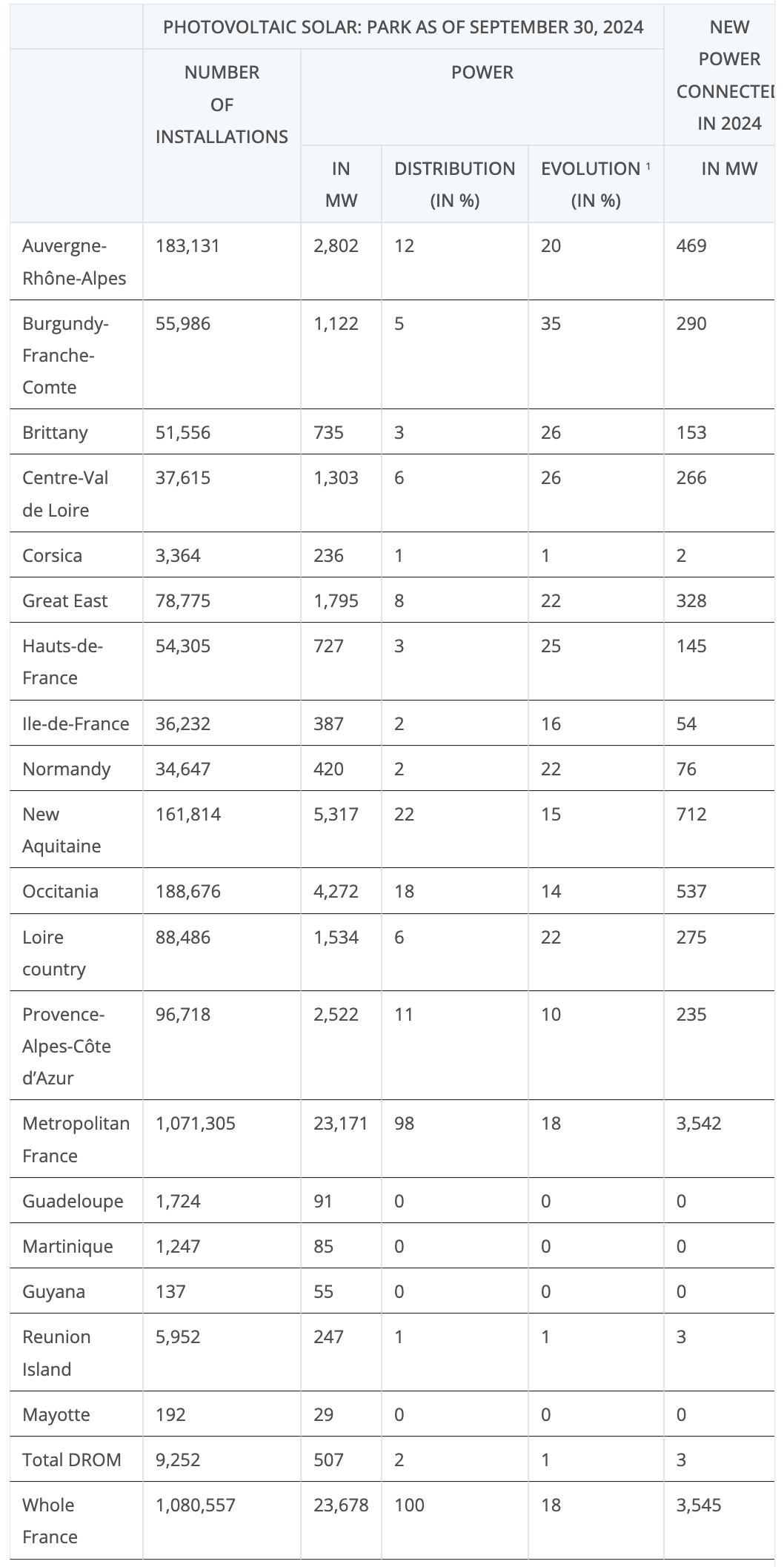France is among the top nations for significant growth in solar energy generation in recent years, and that continued in the third quarter. The Ministry of Ecological Transition has shared the most recent data from its third-quarter (Q3) 2024 solar photovoltaic energy dashboard.
“As of September 30, 2024, [power from solar PV parks] reached 23.7 GW. During the first three quarters of 2024, an additional 3.5 GW were connected, compared to 2.3 GW during the same period in 2023. Electricity production from photovoltaic solar sources amounts to 21.1 TWh during the first three quarters of 2024, up 9% compared to the same period in 2023. It represents, excluding self-consumption, 6.2% of French electricity consumption over this period,” the Ministry of Ecological Transition writes.
The picturesque south of France leads as the region with the highest installed capacities. The Nouvelle-Aquitaine, Occitanie, and Auvergne-Rhône-Alpes areas accounted for 48% of the territory’s newly connected power during the first three quarters of 2024. These regions currently have the largest installed capacities, accounting for 52% of France’s total solar power in the third quarter of 2024. The Nouvelle-Aquitaine provides a lot of encouragement to all developers, including farmers, such as providing information such as agrivoltaic feasibility assessments.
The Ministry of Ecological Transition continues on the evolution of solar photovoltaic park installations in the country. “As of September 30, 2024, the [power capacity of photovoltaic solar parks] reached 23.7 GW, including 22.9 GW in mainland France. The newly connected power is 3.5 GW over the first three quarters of 2024, compared to 2.3 GW over the same period in 2023. A third (34%) of the new connected power corresponds to installations of more than 500 kW, which represent only 0.1% of the number of new connections. Smaller installations, less than 9 kW, represent 92% of the number of newly connected units and 20% of the new power. The power of projects in the queue has increased by 68% since the last quarter of 2023 to reach 37.6 GW, including 11.2 GW with a signed connection agreement.”


That covered power capacity. What about photovoltaic solar electricity production? That amounted to 21.1 TWh in the third quarter of 2024, up from 19.4 TWh over the same period in 2023. Excluding self-consumption, solar electricity production represented 6.2% of French electricity consumption for the first three quarters of 2024. This share is 0.5 percentage points higher than the share of solar production in French electricity consumption in the first three quarters of 2023.

Below is a visual representation of where solar power is installed in France (how much in each region).

Solar PV Self-Consumption
“In the third quarter of 2024, 56.4% of photovoltaic installations (13.8% of installed capacity) produce electricity that is fully or partially self-consumed. The share of these installations increases in number by 2.8 points and in power by 1.1 points compared to the previous quarter. In the third quarter of 2024, 579 GWh of photovoltaic electricity was self-consumed by producers, or 6.4% of the quarter’s photovoltaic production. Installations in total self-consumption produced 130 GWh, or 23% of the total self-consumed. They represent 17% of the metropolitan self-consumption fleet and 10% oMf the total metropolitan fleet.”
As a final note, the results of the quarter are still provisional. They are likely to be revised, most often upwards, in the following quarters. As you can see below, the yellow bars indicate initial estimates, and the brown ones indicate final values.





